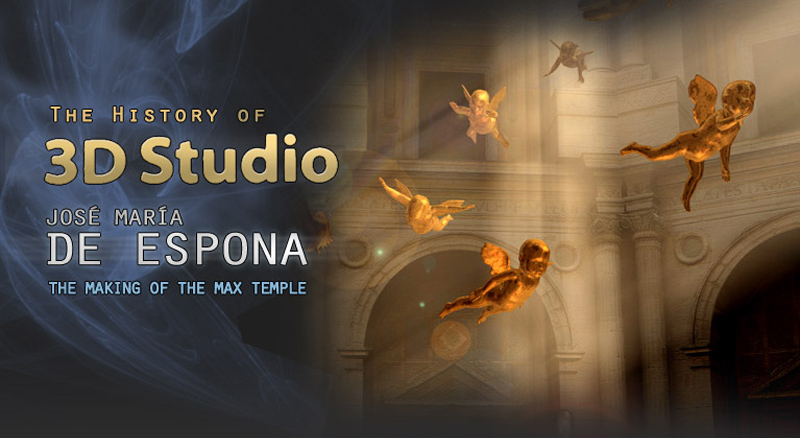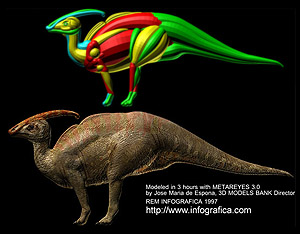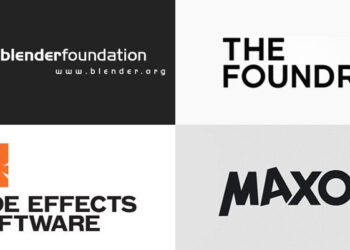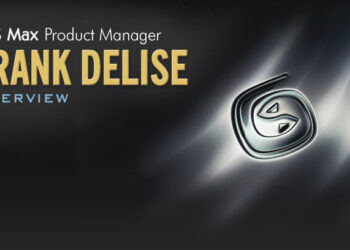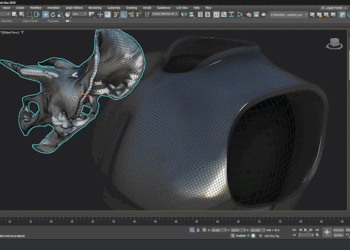By Dave Baker, Neil Blevins, Pablo Hadis
and Scott Kirvan
Foreword
The Max Temple is one of the images most commonly associated with 3D Studio Max. Besides its intent as a promotional tool for the launch of the software it carries a strong message regarding CG art, one that reflects the philosophy of the Yost Group, and is inherently tied to 3D Studio’s development. In this article we tread the dangerous steps of high-end versus low-end CG, SGIs vs. PCs, blatant prejudices in the art world, and the completely pointless but never-ending argument of which software or computer makes one a better artist.
For this tricky, sensitive and volatile task we are joined by José María De Espona, author of the Max Temple image and co-founder of renowned Spanish company REM-Infográfica, who, rather than walking with careful steps, rolls right over the subject and shares the experiences that led him to leave the SGI world, the role 3D Studio played in the democratization of 3D art tools and how this chain of events led him to the creation of the Max Temple image. Due to its characteristics, visceral message and wide circulation, the Max Temple could possibly be catalogued as the first art manifesto of the CG age. Hold on tight for a most fun roller-coaster ride that includes a providential SIGGRAPH encounter, the demise of “high-end” workstations, secret cults, melting computers, a second world war fascist unit and much more.
Leaving the SGI world: the difficulties of a religious conversion

3D Studio r2.5 demo video opening (1993), a sign of the times, documents 3D Studio’s self-conscious position in an arena dominated by workstations
We were among the first ones to move from a professional SGI platform, which cost aprox. 30,000 euros, with professional software (add another 30,000 euros), to a “toy”, a 486 which cost around 1,000 euros. The move included using a new software that at the time wasn’t even considered a choice in the professional field: 3DStudio. Truth is back then (1991?) I myself used to look with certain disregard at 3D software running on PCs, such as Lightwave or Strata. I had never used a PC before, only huge animation machines, such as the Symbolics, Tektronix, HP 9000, Prime and of course the SGI.
My conversion took place when I installed 3DStudio on my father’s home PC. I wanted to teach my father how to use the 3D software so that he could use it for his university courses in Madrid (he’s a naval engineer and was back then Professor Emeritus at the Naval Construction program). I had to learn the ins and outs of the application, and I found the original 3DStudio modeler to be very interesting but extraordinarily stiff. I was completely surprised when I started to use the renderer, though. It was unbelievably fast in comparison with TDI’s renderer [Ed. Note: TDI refers to Thomson Digital Image’s Explore – see Notes], and it was above all very flexible and reliable when it came to adjusting lights with depth maps. Back then, the only way of producing self-shadowing objects was to utilize overly slow ray tracing or laboriously assign by hand a hierarchy of shadows among the different objects in a scene. This was not the case with 3DStudio. Its philosophy for handling lights was very similar to Renderman’s, but it was much more affordable, fast, and had a user-friendly texturing UI.
When it comes to CG, I’ve always had a tendency to judge the final result more than the procedure used to obtain it, and it was a fact that 3DStudio’s renderer was much more efficient for the kind of images I wanted to make. From then on our solution was to model on SGI/TDI and render on 3DStudio.
It was not however an easy task to convince my partners to adopt 3DStudio, and even harder for my clients to accept the fact that something could be produced with household PCs. We had additional problems, such as the need to keep PC boxes always open and put small fans over the CPUs, because we had literally melted some 486 PCs. Every time clients walked into our office, they would stand there with their mouths wide open looking at the atrocious spectacle of all the disassembled PCs, with their chassis and metal guts in open air, accompanied by the loud noise of the fans. I have to say we lost some clients due to this, and also because rumor spread among the competition that we used home PCs for producing TV ads. It sounds completely ridiculous these days, but back then many people in advertising were convinced that the quality of the 3D renders was determined by the “quality” of the machine on which they were made.
The final push though came from Autodesk’s SDK. Javier Reyes, who was then partner at the company, had developed a program for TDI that simulated “metaballs” or “blobs”, which were quite trendy at the moment due to the animations of Japanese artist Yohichiro Kawaguchi. After chasing him for quite a few days, I finally managed to convince him to take a look at the 3DStudio SDK, and consider the possibility of porting the metaballs application as a 3DStudio plugin. The decisive factors for convincing my partner, however, were coming up with the hypothetical name of MetaReyes for the software, and the promise that this platform, 3DStudio, would end up dominating the whole semi-pro market, which back then we imagined would end up being hundreds of thousands of users.
A SIGGRAPH encounter
By the summer of 1994 we already had a working 1.0 version of the plugin, so I made some “flyers” using images from organic models of the statues of Abbu Simbel that I had made as part of ID spots for Spain’s second public TV cultural channel, “La 2” from RTVE. With such meager baggage we arrived to that year’s SIGGRAPH, which took place in Orlando, Florida. At the hotel I made a short animation of some drops of mercury that blended together, we put the flyers into two bags and Javier and I went to the convention center. It was Monday, one day before the exhibition floor opened, but there were already various courses and seminars taking place.
Without asking for permission, we stood up at one of the alleys and started handing out “flyers” to anyone who was going in or coming out of the convention center, with variable results. Some would return them, others would stand there frozen looking at them, considering the possibility of using metaballs on a common PC, when the technology was not even available commercially on SGIs. After a couple of hours of handing out flyers, two guards from the convention center showed up, grabbed our arms, and taking for granted we were foreign exhibitors that had gone out of control, instead of kicking us out on the street, they opened the doors and left us INSIDE the convention center’s main exhibition hall, where exhibitors were still building their booths. So we looked at each other laughing and said, well, this is destiny!
We quickly looked for Autodesk’s booth, which was still in the process of being built. Among Autodesk personnel and those in charge of putting the stand together, there was a guy with a beard who was constantly giving orders to everyone. I told Javier that the guy must be Gary Yost, that we had nothing to lose, and that if the stars’ alignment had brought us into this situation we had to seize the chance. Javier, who spoke much better English than I, talked to him. He was in fact Gary Yost. Before he could react, I put in his hands some images from renderings I had done for RTVE and advertising companies: his reaction was instantaneous. He stood there studying the images. After a brief silence, he turned to me and said he wanted to buy them. He asked how much we wanted for them. The idea sounded completely surrealistic to me, among other things because I thought only my clients could do such a thing. So I told him they didn’t cost anything, that he could do whatever he wanted with them. Gary started giving orders around telling people to take down the images from the booth’s walls and replacing them with ours. Afterward, he kindly lent us one of the PCs from the booth so that we could show him our 3DStudio plugins, he loved MetaReyes.

